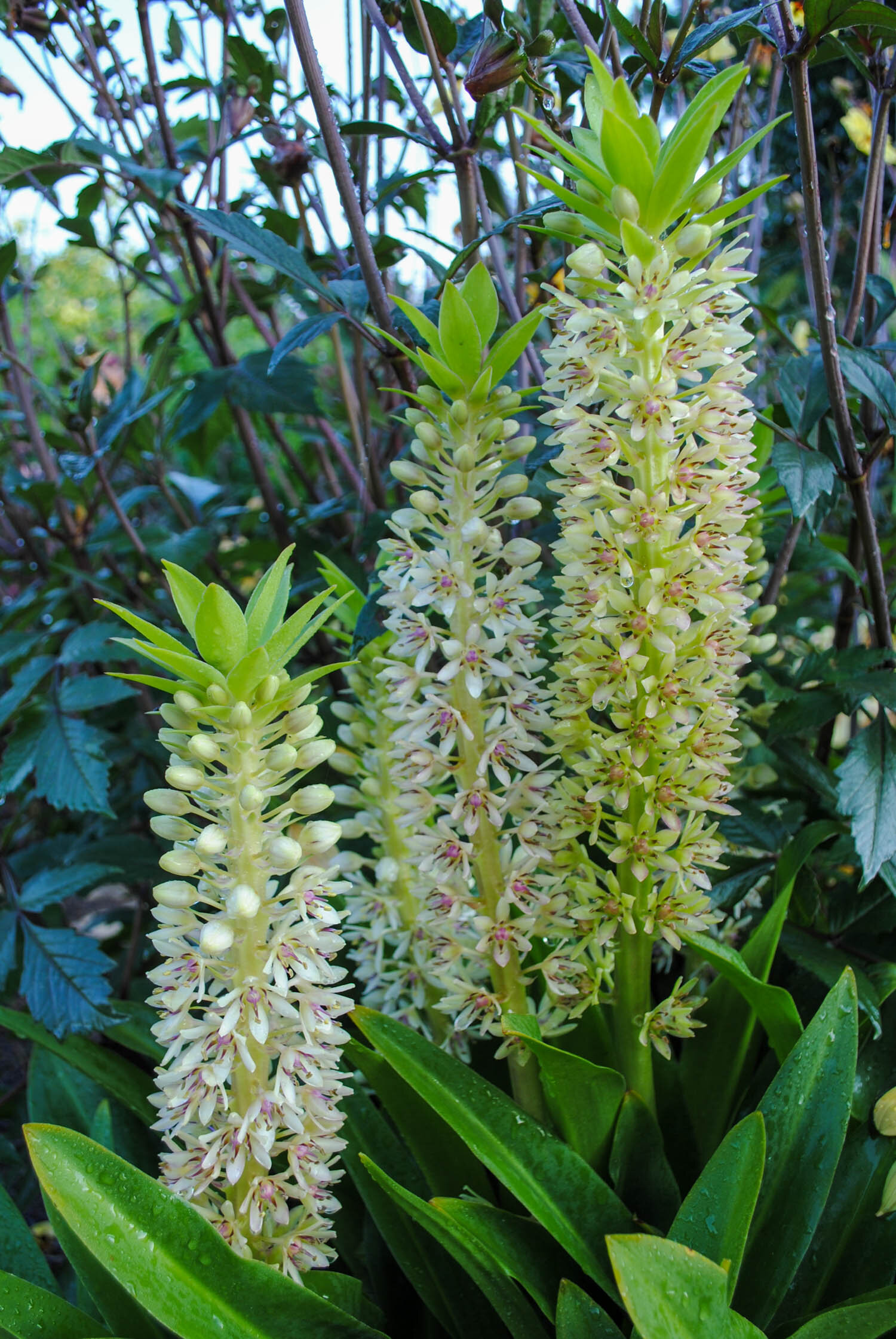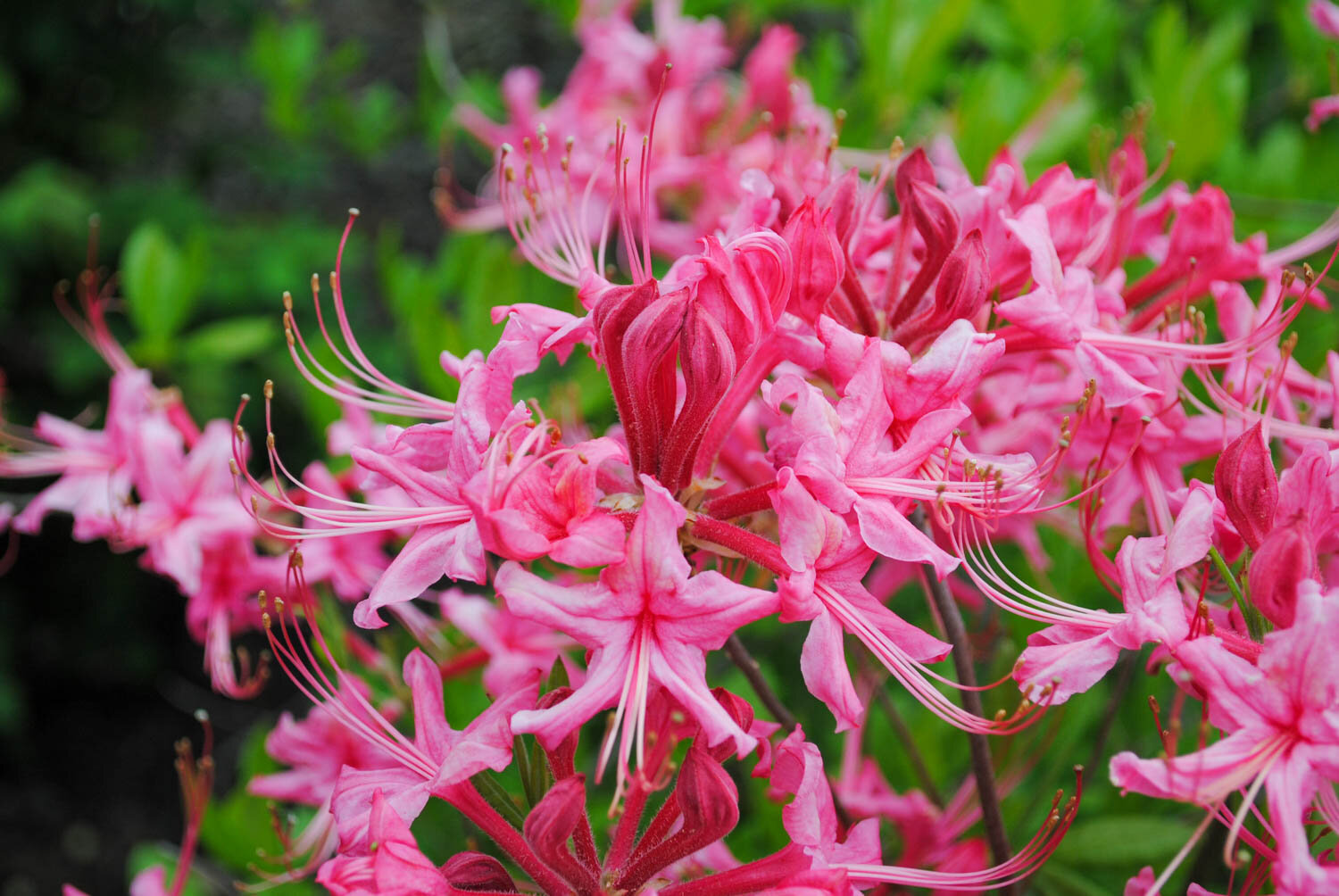This post is 6 of 12 of a series I’m doing this year reflecting back on some of my favorite plants from visiting the JC Raulston Arboretum while attending graduate school at NC State in Raleigh NC. Check back next month for more.
Ah, summer at the JC Raulston Arboretum. I loved how late I could be out at the garden photographing plants. And, in June I needed the extra time to fully appreciate the garden as there was so many plants in full bloom and offering interest in the garden. It had gotten warm enough that many plants were pushing toward their zenith as we reached the longest days of the year. Enjoy this look back at my time spent in this garden in June.
Woodies
Dichroa febrifuga is a somewhat obscure member of the hydrangea family that has pretty blue flowers in the summer. This cultivar 'Yamaguchi Narrow Leaf' has thinner leaves.
Cyrilla is a native shrub that tends to be underused. It tolerates wet areas well. Just note that it can be toxic to honey bees. While many botanists say that Cyrilla racemiflora is the only member in the genus, other scientists have split it into additional species. For example, this smaller leaved-form native to northern Florida is named Cyrilla parviflora.
In early summer new growth would emerge on Pinus wallichiana 'Zebrina'. I loved the two-tone banding.
I’m a sucker for big leaf hydrangeas. Hydrangea macrophylla 'Frau Reiko' was one of my favorites for its white-margined bracts.
And, in June Dr. Dennis Werner’s award-winning, dwarf, and mostly sterile Buddleja ‘Blue Chip’ would flower. It is a cute little shrub for small areas or garden border fronts.
Geophytes
The arboretum had a whole section devoted to geophytes, and in my opinion, June was one of the best times to see it. It had finally gotten warm enough to push many of these herbaceous plants into flower. Here we see a mass of the electric pink and yellow Gladiolus 'Flevo Kosmic'.
Eucomis, or pineapply lily, would also start blooming in earnest in June. Here ‘Sparkling Burgundy’ is just getting started. These inflorescences last long as cut flowers.
Another pineapple lily that I loved was Eucomis montana for its ivory white bracts that would fade to green. Did you know you can propagate Eucomis from leaf cuttings?
I admire a good color combo like this pairing of Dahlia 'Forncett Furnace' with the similarly colored Kniphofia uvaria 'Lola' in the back.
Here is a close up of Kniphofia uvaria 'Lola' since it’s not very visible above. Note that not all Kniphofia are geophytes, but it fit in well here.
A bee visits a flower of Dahlia 'Classic Elise' one evening. Even though they weren’t the large show flower forms, I appreciated seeing the dahlias at the arboretum just to know some could grow in the south.
I always enjoyed seeing the peach-colored flowers of Gladiolus dalenii ‘Boone’, a cultivar that was discovered in the North Carolina town of Boone. It also grows well here for me in Texas.
The soft white of Sinningia tubiflora with just a hint of pink in the tube was a welcome sight in the geophyte border.
And, I just had to throw this one in for kicks. While not at the arboretum, I photographed this fasciated lily (far right stem) leaving Kilgore Hall where the horticulture program is housed to head to the gardens one morning. Note how many flowers this specimen had compared to the others on the left.
Here’s a side view of the fasciation so you can see it better. Fasciation is a fascinating phenomenon where a genetic disorder or disease causes the stem to elongate along an axis. You often see it in flowers where the bloom will elongate in one direction, too.
HERBACEOUS Perennials
Many perennials achieved some serious height in June. One of my favorite daylilies is Hemerocallis 'Autumn Minaret'. I love it for its height, which allows one to plant it towards the back of a garden bed and still be enjoyed.
Eryngium also reach their pinnacle in summer. Here the very structural Eryngium eburneum is loaded with flowers, and the inflorescences were over my head.
Many people plant cardoons for their lovely winter foliage, but Cynara cardunculus also has flowers where the rays resemble glowing purple fiber-optic wires. Bees and other pollinators love these large Asteraceae blooms.
Vernonia lindheimeri is an ironweed I’ve been wanting to get my hands on for its velvety stems.
A really cool and somewhat rare plant at the arboretum was the endangered Baptisia arachnifera. This plant is native to two counties in Georgia and thrives in drier, sandier soils. It was quite at home here in the scree garden.
Panicum virgatum 'Cheyenne Sky' is an improved form of ‘Shenandoah’. To me it seemed to have more maroon color in the foliage earlier in the summer.
Ratibida pinnata is another underused native perennial. Sure, it can get a little tall, but I just love the rich yellow rays on this species.
One of my favorite color combination in the long border was this pairing of Echinacea purpurea 'Stewart's Pink', Panicum virgatum 'Shenandoah', and Monarda 'Violet Queen'.
I leave you with these two cool gradient shots that show the annuals in the trial garden. Here we have a warm gradient of Portulaca,…
… and here we fade from warm to cool for these Verbena.
































































































































































































































